
95% of researchers rate our articles as excellent or good
Learn more about the work of our research integrity team to safeguard the quality of each article we publish.
Find out more
ORIGINAL RESEARCH article
Front. Phys. , 19 April 2021
Sec. High-Energy and Astroparticle Physics
Volume 9 - 2021 | https://doi.org/10.3389/fphy.2021.628727
This article is part of the Research Topic Black Holes, Extended Phase Space Thermodynamics and Phase Transitions View all 5 articles
In this paper, we investigate the thermal stability and Joule-Thomson expansion of some new quasitopological black hole solutions. We first study the higher-dimensional static quasitopological black hole solutions in the presence of Born-Infeld, exponential, and logarithmic nonlinear electrodynamics. The stable regions of these solutions are independent of the types of the nonlinear electrodynamics. The solutions with horizons relating to the positive constant curvature,
Black holes as thermodynamic systems have been one of the most interesting subjects in theoretical physics for several decades. The main motivation for studying thermodynamics of AdS black holes originates from the AdS/CFT correspondence. In this correspondence, the dynamics of the quantum field theory in
Joule-Thomson expansion is another thermodynamic issue which has attracted many people. For the van der Waals gases, the Joule-Thomson expansion is an isenthalpic process in which we can probe the temperature changes as the gas expands from the high pressure to the low one, through porous plugs. In fact, the Joule-Thomson expansion is a tool used to know whether a cooling or heating process is happening for a gas. The zero value of the Joule-Thomson coefficient is called the inversion point in which the two cooling to heating processes intersect. Considering the mass of a black hole as an enthalpy [5], the Joule-Thomson expansion of charged AdS black holes was studied for the first time in Ref. [6]. The Joule-Thomson expansion was studied in many papers [7–14]. Joule-Thomson expansion of the higher dimensional charged AdS and Gauss-Bonnet AdS black holes have been broadly probed in Refs. [7, 8]. Joule-Thomson expansion of charged AdS black holes in rainbow gravity has also been studied in Ref. [15]. In Refs. [16, 17], the Joule-Thomson expansion of the usual and regular (Bardeen)-AdS black holes have been investigated. Joule-Thomson expansion of Born-Infeld AdS black holes has been investigated in Ref. [18]. Born-Infeld nonlinear electrodynamics was introduced by Born and Infeld with the main aim to remove the divergence of the electric field [19]. Other types of the nonlinear electrodynamics such as logarithmic nonlinear (LN) and exponential nonlinear (EN) were introduced in Refs. [20, 21]. The main purpose of this paper is to obtain the Joule-Thomson expansion for the nonlinear quasitopological black holes.
Quasitopological gravity is a higher curvature modified theory in d dimensions. This gravity has some advantages which has attracted us to investigating it further. Based on the AdS/CFT correspondence, this gravity can provide a one-to-one duality between .the central charges of the conformal field theory and the parameters in the gravitational side [22–24]. Also, Einstein’s gravity is a low energy limit of the string theory which predicts higher dimensions. As the terms of the quasitopological gravity are not true topological invariants, so they can generate nontrivial gravitational terms in lower dimensions. This is the benefit of this gravity to the other modified gravities such as Lovelock. This gravity can also provide a dual CFT which respects the causality [25]. Quasitopological black holes and
We also obtained the five-dimensional Yang-Mills (YM) quasitopological black hole solutions and compared them with the ones in quasitopological Maxwell theory. The YM theory is one of the attractive non-abelian gauge theories that comes from the low energy limit of the string theory model’s spectrum. Non-abelian gauge fields beside the gravitational ones can be an effective subject in the physical phenomena of the results of superstring models. The analytic black hole solution of the Einstein-YM (EYM) was first developed by Yasskin in Ref. [30]. Black hole solutions in the presence of nonabelian Yang-Miils theory have been obtained in Refs. [31–34]. Black holes in a non-abelian Born-Infeld theory and supersymmetric EYM theories were studied in [35, 36], respectively. Using the Wu-Yang ansatz [37], black hole solutions of the various gravities coupled to the YM field have been explored in Refs. [38–44]. It is interesting to look at the Joule-Thomson expansion of the Yang-Mills quasitopological solutions.
This paper is arranged as follows: We start with the quasitopological gravity and the nonlinear electrodynamic theory in Sec. 2 and find the related static solutions. We then obtain the thermodynamic quantities and study the thermal stability of the related solutions in the sections III and IV, respectively. We also probe the Joule-Thomson expansion of the Power Maxwell quasitopological black hole in Sec.VI. In Sec. VII, we obtain the solution of the Yang-Mills black hole in the presence of the quasitopological gravity and then probe the thermal stability and Joule-Thomson expansion for this black hole. Lastly, we provide a conclusion of the paper in Sec. 8.
The main structure of the
where
where
We define
where the coefficients
where
where
so the gravitational field equation is gained as
where we have the definitions
where m is an integration constant relating to the mass of the black hole. In the above relation,
where for brevity reasons, we have described W, A, y, and B in the Supplementary Appendix B.
Via the AdS/CFT correspondence, the thermodynamic behaviors of an AdS black hole can provide a set of knowledge for a certain dual conformal field theory (CFT). So, in this section, we are eager to obtain the thermodynamic quantities of the static nonlinear quasitopological black hole. Using the subtraction method [48], the mass of this black hole is gained as
where m can be obtained from Eq. 11 by the fact that
and the electric potential U is defined by the formula
where
If we consider the thermodynamic volume and pressure as below [50]
therefore, the first law of the thermodynamics in the extended phase space follows from the formula
where B and
that the relations
If we determine the specific volume
Critical behavior of the cubic quasitopological black hole has been investigated in Ref. [27]. As the critical behavior of the quartic quasitopological black hole is similar to the cubic one, we refrain from repeating them here.
In order to know where a black hole may exist physically or not, we should discuss its thermal stability. To study the thermal stability of the static nonlinear quasitopological black hole, we define the heat capacity
The positive value of
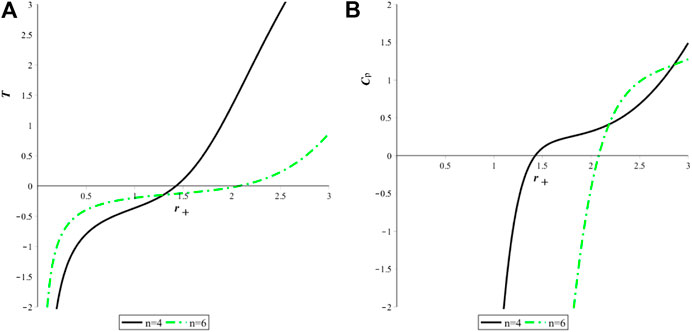
FIGURE 1. Thermal stability of the BI quasitopological black hole with respect to
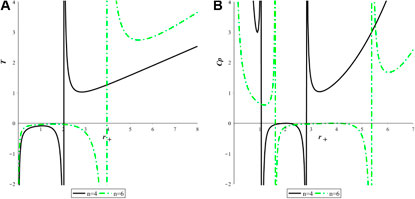
FIGURE 2. Thermal stability of the BI quasitopological black hole with respect to
In this section, we intend to study the Joule-Thomson expansion of the obtained quasitopological black hole coupled to the nonlinear electrodynamics. In the classical thermodynamics, the Joule-Thomson expansion is an isenthalpic process in which we can probe the temperature changes as the gas expands from the high pressure to the low one through porous plugs. The Joule-Thomson coefficient is obtained by the Eq. 6
where the enthalpy of the system, H, is fixed. In the gas expansion, the pressure always decreases. So, when the value of the coefficient µ is positive during the expansion, it means that the temperature decreases and therefore it is called a cooling phenomenon. However, when µ is negative, the temperature increases, and this is called a heating process. For
Because a black hole behaves like a thermodynamic system, we can consider the mass of a black hole as the enthalpy and probe the Joule-Thomson expansion for it.
Now, we would like to investigate the Joule-Thomson expansion of the higher-dimensional nonlinear quasitopological black hole and identify the region in which cooling, or heating occurs. Therefore in Figure 3, we have plotted the Joule-Thomson coefficient µ versus
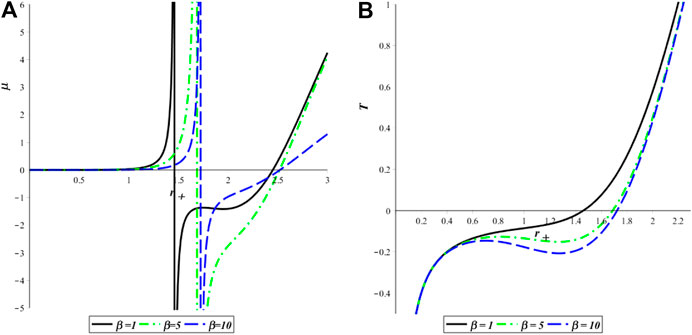
FIGURE 3. The Joule-Thomson coefficient µ and temperature T of the BI quasitopological black hole with respect to
We have also plotted the isenthalpic curves and the inversion curve of the nonlinear quasitopological black hole for different values of Q and β in Figure 4. In each subfigure, we can see three isenthalpic curves with constant M and the related inversion curve happening at the maximum value of the isenthalpic curves. We define the inversion temperature and pressure of each isenthalpic as

FIGURE 4. Isenthalpic curves and inversion curve of the BI quasitopological black hole with
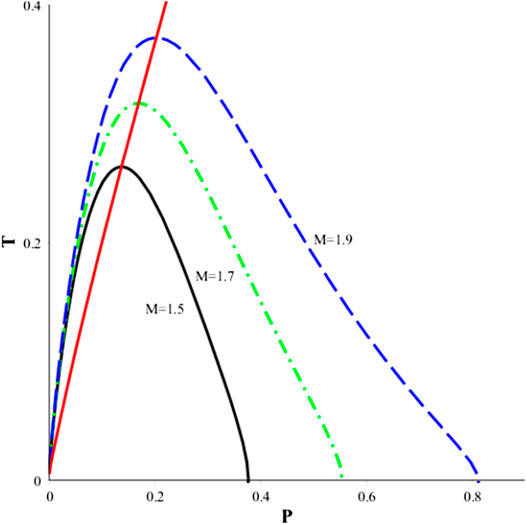
FIGURE 5. Isenthalpic curves and inversion curve of the BI quasitopological black hole with
Power Maxwell is another nonlinear electrodynamics which can preserve the conformal invariance of the theory in higher dimensions. It has the form
where for the nonlinear parameter
where
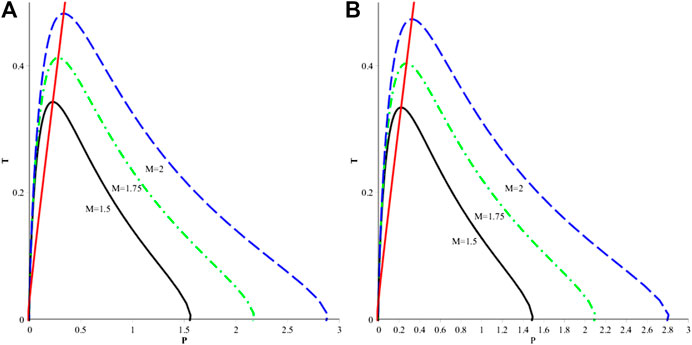
FIGURE 6. Isenthalpic curves and inversion curve of the PM quasitopological black hole with
In this section, we consider the non-abelian Yang-Mills theory with the quasitopological gravity and obtain the related five-dimensional solutions. We also obtain the thermodynamic quantities of this black hole and then probe the Joule-Thomson expansion for it. In five dimensions, we can just consider the six-parameters gauge groups,
The gauge field tensor
where e is a coupling constant and
and
We can also determine the temperature and the Yang-Mills charge of this black hole as
This black hole obeys the first law of thermodynamics
where
This relation restricts the range of the horizon value
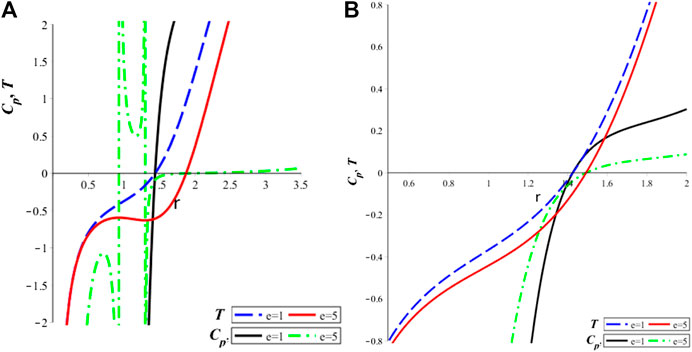
FIGURE 7. Thermal stability with respect to
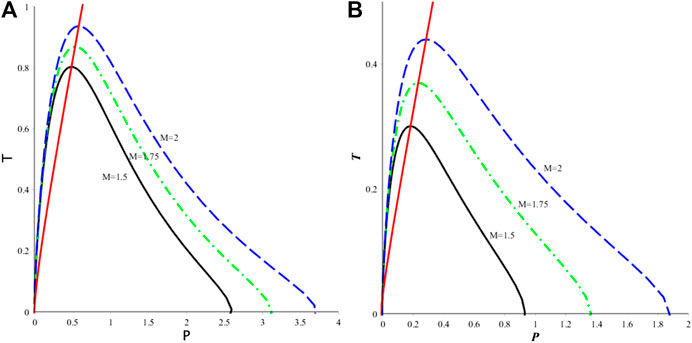
FIGURE 8. Isenthalpic curves and inversion curve with
In this paper, we reviewed some quasitopological black hole solutions and obtained their thermodynamic properties such as their thermal stability and Joule-Thomson expansion. At first, we achieved the
We also studied the Joule-Thomson expansion of the power Maxwell quasitopological black holes. The results showed that for the large nonlinear parameter, s, the extreme black hole has a smaller pressure. This is while for the Einstein-power-Maxwell black hole, an extreme black hole with a small parameter s happens in low pressure. At the end, we looked at the Yang-Mills theory and gained the five-dimensional Yang-Mills solutions in the quasitopological gravity. We also carefully examined the thermodynamic quantities such as thermal stability and Joule-Thomson for this black hole and compared the results with the five-dimensional Maxwell quasitopological black hole. They show that there is a
The original contributions presented in the study are included in the article/Supplementary Material, further inquiries can be directed to the corresponding author.
All authors listed have made a substantial, direct, and intellectual contribution to the work and approved it for publication.
This work is supported by Iranian National Science Foundation (INSF).
FN would like to thank physics department of Isfahan University of Technology for warm hospitality.
The authors declare that the research was conducted in the absence of any commercial or financial relationships that could be construed as a potential conflict of interest.
The Supplementary Material for this article can be found online at: https://www.frontiersin.org/articles/10.3389/fphy.2021.628727/full#supplementary-material.
1. Aharony O, Gubser SS, Maldacena J, Ooguri H, Oz Y. Large N field theories, string theory and gravity. Phys Rep (2000) 323:183. arXiv:hep-th/9905111. doi:10.1016/s0370-1573(99)00083-6
2. Hawking SW, Page DN. Thermodynamics of black holes in anti-de Sitter space. Commun Math Phys (1983) 87:577. doi:10.1007/bf01208266
3. Chamblin A, Emparan R, Johnson CV, Myers RC. Charged AdS black holes and catastrophic holography. Phys Rev D (1999) 60:064018. arXiv:hep-th/9902170. doi:10.1103/physrevd.60.064018
4. Chamblin A, Emparan R, Johnson CV, Myers RC. Holography, thermodynamics, and fluctuations of charged AdS black holes. Phys Rev D (1999) 60:104026. arXiv:hep-th/9904197. doi:10.1103/physrevd.60.104026
5. Kastor D, Ray S, Traschen J. Enthalpy and the mechanics of AdS black holes. Classical Quantum Gravity (2009) 26:195011. arXiv:0904.2765 [hep-th]. doi:10.1088/0264-9381/26/19/195011
6. Ökcü Ö, Aydiner E. Joule-Thomson expansion of charged AdS black holes. Eur Phys J C (2017) 77:24. arXiv:1611.06327 [gr-qc]. doi:10.1140/epjc/s10052-017-4598-y
7. Mo JX, Li GQ, Lan SQ, Xu XB. Joule-Thomson expansion of d-dimensional charged AdS black holes. Phys Rev D (2018) 98:124032, 2018. arXiv:1804.02650 [gr-qc]. doi:10.1103/physrevd.98.124032
8. Lan SQ. Joule-Thomson expansion of charged Gauss-Bonnet black holes in AdS space. Phys Rev D (2018) 98:084014. arXiv:1805.05817 [gr-qc]. doi:10.1103/physrevd.98.084014
9. Ghaffarnejad H, Yaraie E, Farsam M. Quintessence Reissner Nordström anti de Sitter black holes and Joule Thomson effect. Int J Theor Phys (2018) 57:1671. arXiv:1802.08749 [gr-qc]. doi:10.1007/s10773-018-3693-7
10. Almeida RD, Yogendran KP. Thermodynamic properties of holographic superfluids. (2018). arXiv:1802.05116.
11. Ahmed Rizwan CL, Naveena Kumara A, Deepak V, Ajith KM. Joule-Thomson expansion in AdS black hole with a global monopole. Int J Mod Phys A (2018) 33(35):1850210. doi:10.1142/S0217751X1850210XarXiv:1805.11053
12. Chabab M, El Moumni H, Iraoui S, Masmar K, Zhizeh S. Joule-Thomson expansion of RN-AdS black holes in f(R) gravity. Lett High Energy Phys (2018) 02(05):5. doi:10.2018/LHEP000001 arXiv:1804.10042 [gr-qc].
13. Rostami M, Sadeghi J, Miraboutalebi S, Masoudi AA, Pourhassan B. Charged accelerating AdS black hole of f(R) gravity and the Joule-Thomson expansion. Int J Geom Methods Mod Phys (2019) 17(09):2050136. doi:10.1142/S0219887820501364 arXiv:1908.08410.
14. Mo JX, Li GQ. Effects of lovelock gravity on the Joule-Thomson expansion. Classical Quantum Gravity (2020) 37(4):045009. doi:10.1088/1361-6382/ab60b9 arXiv:1805.04327.
15. Yekta DM, Hadikhani A, Ökcü Ö. Joule-Thomson expansion of charged AdS black holes in rainbow gravity. Phys Lett B (2019) 795:521. doi:10.1016/j.physletb.2019.06.049
16. Pu J, Guo S, Jiang QQ, Zu XT. Joule-Thomson expansion of the regular (Bardeen)-AdS black hole. Chin Phys C (2020) 44:035102. doi:10.1088/1674-1137/44/3/035102 arXiv:1905.02318 [gr-qc].
17. Li C, He P, Li P, Deng JB. Joule-Thomson expansion of the Bardeen-AdS black holes. Gen Relativ Gravitation (2020) 52:50. arXiv:1904.09548 [gr-qc] doi:10.1007/s10714-020-02704-z
18. Bi S, Du M, Tao J, Yao F. Joule-Thomson expansion of Born-Infeld AdS black holes. Chin Phys C (2020) 45(2):025109. doi:10.1088/1674-1137/abcf23 arXiv:2006.08920 [gr-qc].
19. Born M, Infeld L. Foundations of the new field theory. Proc R Soc A (1934) 144:425. doi:10.1098/rspa.1934.0059
20. Soleng HH. Charged black points in general relativity coupled to the logarithmic U(1) gauge theory. Phys Rev D (1995) 52:6178. doi:10.1103/physrevd.52.6178
21. Hendi SH. Asymptotic charged BTZ black hole solutions. J High Energy Phys (2012) 03:065. doi:10.1007/JHEP03(2012)065 arXiv:1405.4941 [hep-th].
22. Lemos JP. Cylindrical black hole in general relativity. Phys Lett B (1995) 353:46–51. arXiv:gr-qc/9404041. doi:10.1016/0370-2693(95)00533-q
23. Cai R-G, Zhang Y-Z. Black plane solutions in four-dimensional spacetimes. Phys Rev D (1996) 54:4891. doi:10.1103/physrevd.54.4891
24. Mann RB. Pair production of topological anti-de Sitter black holes. Classical Quantum Gravity (1997) 14:L109. doi:10.1088/0264-9381/14/5/007
25. Myers RC, Paulos MF, Sinha A. Holographic studies of quasi-topological gravity. J High Energy Phys (2010) 08:035. doi:10.1007/JHEP08(2010)035 arXiv:1004.2055 [hep-th].
26. Dehghani MH, Bazrafshan A, Mann RB, Mehdizadeh MR, Ghanaatian M, Vahidinia MH. Black holes in (quartic) quasitopological gravity. Phys Rev D (2012) 85(10):104009, 2012. arXiv:1109.4708 [hep-th] doi:10.1103/physrevd.85.104009
27. Hennigar RA, Brenna WG, Mann RB. P-v criticality in quasitopological gravity. J High Energy Phys (2015) 07:77. doi:10.1007/JHEP07(2015)077 arXiv:1505.05517 [hep-th].
28. Mir M, Hennigar RA, Ahmed J, Mann RB. Black hole chemistry and holography in generalized quasi-topological gravity. J High Energy Phys (2019) 2019(8):68, 2019. arXiv:1902.02005 [hep-th]. doi:10.1007/jhep08(2019)068
29. Mir M, Mann RB. On generalized quasi-topological cubic-quartic gravity: thermodynamics and holography. J High Energy Phys (2019) 2019(7):1–58. doi:10.1007/JHEP07(2019)012 arXiv:1902.10906 [hep-th].
30. Yasskin PB. Solutions for gravity coupled to massless gauge fields. Phys Rev D (1975) 12:2212. doi:10.1103/physrevd.12.2212
31. Lavrelashvili G, Maison D. Regular and black hole solutions of Einstein-Yang-Mills Dilaton theory. Nucl Phys B (1993) 410:407. doi:10.1016/0550-3213(93)90441-q
32. Donets EE, Gal'tsov DV. Stringy sphalerons and non-abelian black holes. Phys Lett B (1993) 302:411, 1993. arXiv:hep-th/9212153. doi:10.1016/0370-2693(93)90418-h
33. Torii T, Maeda KI. Black holes with non-Abelian hair and their thermodynamical properties. Phys Rev D (1993) 48:1643. doi:10.1103/physrevd.48.1643
34. Brihaye Y, Radu E. Euclidean solutions in Einstein-Yang-Mills-Dilaton theory. Phys Lett B (2006) 636:212. arXiv:gr-qc/0602069. doi:10.1016/j.physletb.2006.04.001
35. Wirschins M, Sood A, Kunz J. Non-Abelian Einstein-Born-Infeld black holes. Phys Rev D (2001) 63:084002. arXiv:hep-th/0004130. doi:10.1103/physrevd.63.084002
36. Huebscher M, Meessen P, Ortin T, Vaula S. N=2 Einstein-Yang-Mills’s BPS solutions. J High Energy Phys (2008) 09:099. doi:10.1088/1126-6708/2008/09/099 arXiv:0806.1477 [gr-qc].
37. Wu TT, Yang CN, Mark H. Properties of Matter Under Unusual Conditions. New York, London: Interscience (1969). 349 p.
38. Mazharimousavi SH, Halilsoy M. 5D black hole solution in Einstein-Yang-Mills-Gauss-Bonnet theory. Phys Rev D (2007) 76:087501. arXiv:0801.1562 [gr-qc]. doi:10.1103/physrevd.76.087501
39. Mazharimousavi SH, Halilsoy M. Black hole solutions in Einstein-Maxwell-Yang-Mills-Gauss-Bonnet theory. J Cosmol Astropart Phys (2008) 2008:005. arXiv:0801.2110 [gr-qc]. doi:10.1088/1475-7516/2008/12/005
40. Mazharimousavi SH, Halilsoy M. Higher dimensional Yang Mills black holes in third order lovelock gravity. Phys Lett B (2008) 665:125–130. 10.1016/j.physletb.2008.06.007 arXiv:0801.1726 [gr-qc].
41. Mazharimousavi SH, Halilsoy M. Lovelock black holes with a power-Yang-Mills source. Phys Lett B (2009) 681:190. 2009. arXiv:0908.0308 [gr-qc]. doi:10.1016/j.physletb.2009.10.006
42. Bostani N, Dehghani MH. Topological black holes of (N+1)-dimensional Einstein-Yang-Mills gravity. Mod Phys Lett A (2010) 25:1507. arXiv:0908.0661 [gr-qc]. doi:10.1142/s0217732310032809
43. Dehghani MH, Bostani N, Pourhasan R. Topological black holes of Gauss-Bonnet-Yang-Mills gravity. Int J Mod Phys D (2010) 19:1107, 2010. arXiv:0908.0663 [gr-qc]. doi:10.1142/s0218271810017196
44. Dehghani MH, Bazrafshan A. Topological black holes of Einstein-Yang-Mills Dilaton gravity. Int J Mod Phys D (2010) 19:293. arXiv:1005.2387 [gr-qc]. doi:10.1142/s0218271810016403
45. Bazrafshan A, Naeimipour F, Ghanaatian M, Khajeh A. Physical and thermodynamic properties of quartic quasitopological black holes and rotating black branes with a nonlinear source. Phys Rev D (2019) 100:064062. arXiv:1905.12428 [gr-qc]. doi:10.1103/physrevd.100.064062
46. Ghanaatian M. Quartic quasi-topological-BornInfeld gravity. Gen Relativ Gravitation (2015) 47:105. doi:10.1007/s10714-015-1951-z
47. Ghanaatian M, Naeimipour F, Bazrafshan A, Abkar M. Charged black holes in quartic quasi-topological gravity. Phys Rev D (2018) 97:104054. arXiv:1801.05692 [gr-qc]. doi:10.1103/physrevd.97.104054
48. Brown JD, York JW. Quasilocal energy and conserved charges derived from the gravitational action. Phys Rev D (1993) 47:1407. doi:10.1103/physrevd.47.1407
49. Wald RM. Black hole entropy is the Noether charge. Phys Rev D (1993) 48:3427. arXiv:gr-qc/9307038. doi:10.1103/physrevd.48.r3427
50. Dolan BP. Pressure and volume in the first law of black hole thermodynamics. Classical Quantum Gravity (2011) 28:235017. arXiv:1106.6260 [gr-qc] doi:10.1088/0264-9381/28/23/235017
51. Ghanaatian M, Naeimipour F, Bazrafshan A, Eftekharian M, Ahmadi A. Third order quasitopological black hole with a power-law Maxwell nonlinear source. Phys Rev D (2019) 99:024006, 2019. arXiv:1809.05198 [gr-qc]. doi:10.1103/physrevd.99.024006
52. Ghanaatian M, Bazrafshan A. Nonlinear charged black holes in AdS quasi-topological gravity. Int J Mod Phys D (2013) 22:1350076. arXiv:1304.2311 [gr-qc]. doi:10.1142/s0218271813500764
Keywords: qusitopological, Joule-Thomson, Yang-Mills, higher dimensional black holes, born-infeld
Citation: Mirza B, Naeimipour F and Tavakoli M (2021) Joule-Thomson Expansion of the Quasitopological Black Holes. Front. Phys. 9:628727. doi: 10.3389/fphy.2021.628727
Received: 12 November 2020; Accepted: 15 January 2021;
Published: 19 April 2021.
Edited by:
Behzad Eslam Panah, University of Mazandaran, IranReviewed by:
Ali Övgün, Eastern Mediterranean University, TurkeyCopyright © 2021 Mirza, Naeimipour and Tavakoli. This is an open-access article distributed under the terms of the Creative Commons Attribution License (CC BY). The use, distribution or reproduction in other forums is permitted, provided the original author(s) and the copyright owner(s) are credited and that the original publication in this journal is cited, in accordance with accepted academic practice. No use, distribution or reproduction is permitted which does not comply with these terms.
*Correspondence: Behrouz Mirza, Yi5taXJ6YUBpdXQuYWMuaXI=
Disclaimer: All claims expressed in this article are solely those of the authors and do not necessarily represent those of their affiliated organizations, or those of the publisher, the editors and the reviewers. Any product that may be evaluated in this article or claim that may be made by its manufacturer is not guaranteed or endorsed by the publisher.
Research integrity at Frontiers

Learn more about the work of our research integrity team to safeguard the quality of each article we publish.